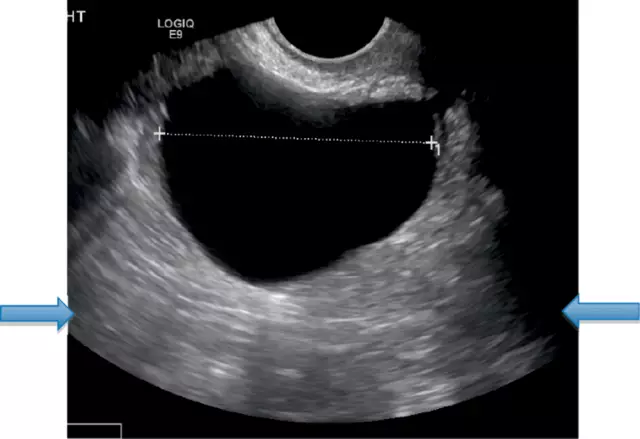- Author Rachel Wainwright [email protected].
- Public 2023-12-15 07:39.
- Last modified 2025-11-02 20:14.
Ultrasound of internal organs

Ultrasound of internal organs is an informative diagnostic method widely used in modern medicine, based on the echolocation method. Almost all abdominal organs reflect well with ultrasound, which makes it easy to scan them using this method. During the procedure, the doctor determines their size and shape, location, structure of tissues and constituent elements, wall thickness, and also determines the absence or presence of chronic and acute inflammatory changes, neoplasms, traumatic injuries.
During an ultrasound of the internal organs of the abdominal cavity, the doctor examines: the retroperitoneal space, liver, duodenum, kidneys and adrenal glands, pancreas, gallbladder and bile ducts, stomach, spleen, blood vessels.
Indications for ultrasound of internal organs
- bitterness in the mouth;
- the presence of a feeling of heaviness in the right hypochondrium;
- any painful sensations in the abdomen;
- increased gas formation;
- feeling of "fullness" after eating;
- an attack of acute or girdle pain in the right hypochondrium;
- transferred hepatitis (A, B or C);
- dynamic control of diseases already identified by ultrasound examination (pancreatitis, gallstone disease, cyst of the liver and pancreas, hemangioma or other formation in the liver, cholecystitis).
Indications for ultrasound of the child's internal organs:
- sharp pain in the abdomen;
- suspicion of appendicitis;
- an increase in the size of the spleen or liver;
- aortic aneurysms;
- kidney stone or gallstone disease.
In general, for the purpose of a preventive examination of an ultrasound of the internal organs, pediatricians recommend that a child be done once a year. The examination allows you to determine congenital features, identify unwanted developmental anomalies, polyps, stones in the gallbladder and kidneys.
Preparation for ultrasound of internal organs
An ultrasound examination is carried out on an empty stomach or 6 hours after the last meal, if an ultrasound of the internal organs is necessary, a child under 5 years old does not need to eat for 4 hours before the procedure, the baby is done before the next feeding.

To obtain high-quality results, patients are offered to carry out additional preparation for an ultrasound of the internal organs - to adhere to a diet: in 1-2 days for the procedure, exclude fresh fruits and vegetables, vegetable juices, black bread, legumes and dairy products from the diet, since they can all provoke bloating intestines, undesirable for research. It is not recommended to drink liquid the day before, use chewing gum.
How is ultrasound done?
Ultrasound of internal organs is performed in two ways: external (scanning) and internal (transvaginal in women and transrectal in men, when the sensor is inserted into the body).
Doppler ultrasonography is a relatively new research method. Due to the ability to change the length of the ultrasonic wave reflected from a moving object, it is used to diagnose blood flow and vessels.
Found a mistake in the text? Select it and press Ctrl + Enter.






